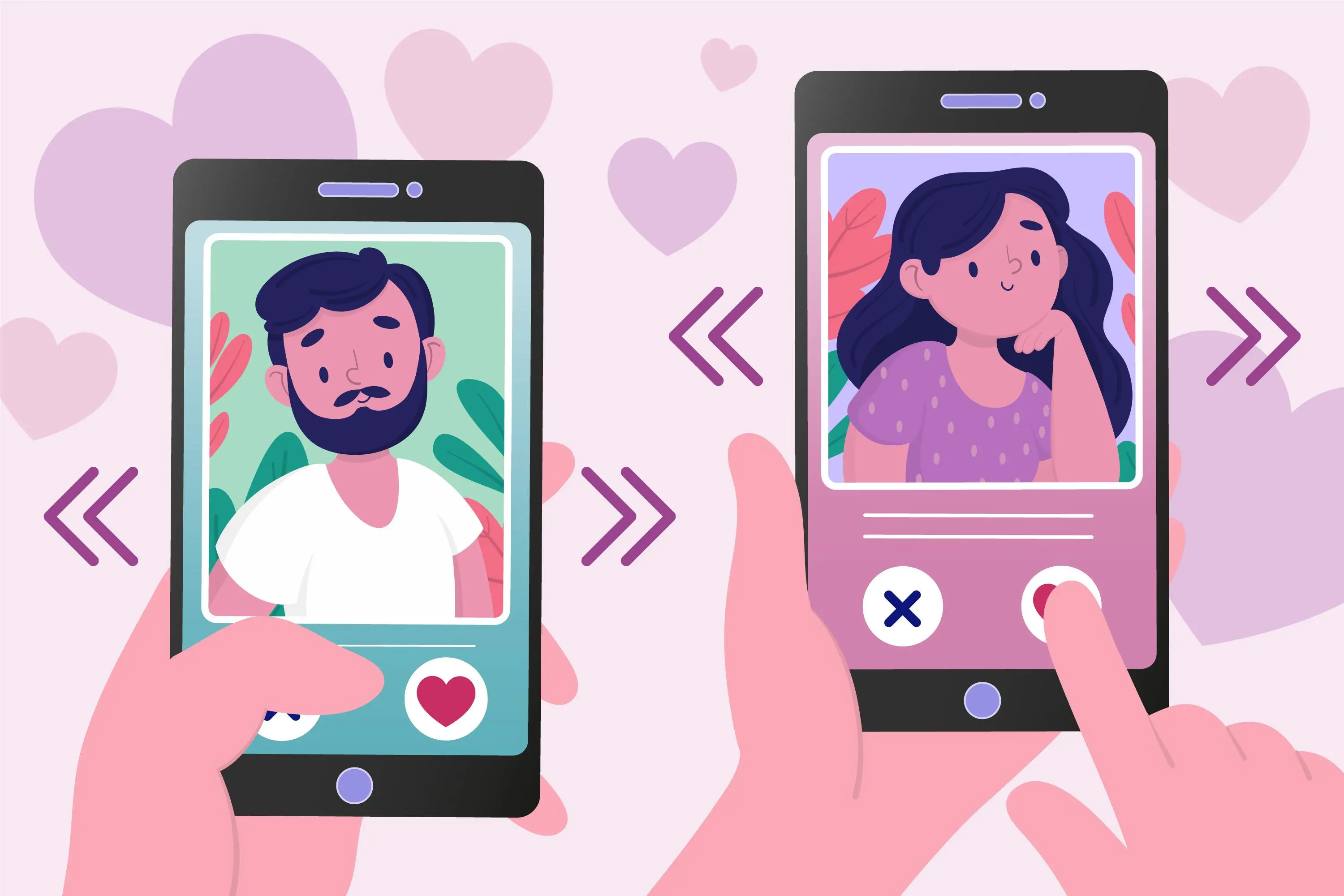Love in the Time of Algorithms: The Global Evolution of Online Dating
Explore how technology is reshaping romance worldwide, from AI matchmakers to cross-cultural connections, in this deep dive into the global phenomenon of online dating.

In bustling metropolises and serene villages across the globe, a quiet revolution is taking place. Love, that most ancient and universal of human experiences, is being transformed by the cold logic of algorithms and the glowing screens of smartphones. Welcome to the world of online dating, where romance meets technology, and the pursuit of connection has become a global, multi-billion dollar industry.
Gone are the days when finding a partner meant relying solely on chance encounters, family matchmakers, or the limited pool of one’s immediate social circle. Today, singles worldwide are turning to their devices to navigate the complex world of modern romance. But this shift is more than just a change in how people meet; it’s a fundamental reimagining of relationships, commerce, and the very nature of human interaction.
The Paradox at the Heart of Digital Love
At first glance, the business model of dating apps seems paradoxical, almost self-defeating. Unlike most industries that thrive on customer retention, dating platforms face a unique challenge: their success often leads to their users leaving. When two people find a lasting connection and delete their accounts, the app loses not one, but two customers. It’s a conundrum that would make most business strategists scratch their heads in bewilderment.
Yet, far from being a hindrance, this paradox has spurred incredible innovation in the industry. Companies have had to become creative, diversifying their offerings and finding new ways to remain relevant in users’ lives, even after they’ve found a partner. Take, for instance, the approach of apps like Bumble. What started as a dating platform has blossomed into a multifaceted social ecosystem, offering services for friendship (Bumble BFF) and professional networking (Bumble Bizz).
This expansion isn’t just clever business strategy; it reflects a deeper understanding of human needs in the digital age. In a world where traditional community structures are often fragmented, these apps are stepping in to fill the void, providing avenues for all types of human connections. Whether you’re looking for a business partner or seeking a hiking companion, there’s likely an app tailored to your needs.
The Global Love Economy: When Borders Blur
The rise of online dating hasn’t just changed how we find love; it’s redefined where we find it. In the past, relationships were often limited by geography and social circles. Today, people can connect with potential partners from different continents, sparking connections that span vast distances. This global love economy has created a fascinating melting pot of cultures, languages, and expectations.
Countless stories of unlikely connections facilitated by dating apps are emerging, painting a picture of a world where love knows no borders. These cross-cultural romances often lead to unique experiences, blending different traditions and customs in ways that were much rarer in the past.
But this global connection comes with its own set of challenges. Dating apps must navigate a complex web of cultural norms, local laws, and regional expectations. What’s considered charming in one culture might be offensive in another. Apps have had to become cultural chameleons, adapting their interfaces, features, and even their core functionalities to suit different markets.
In India, for example, apps like Shaadi.com and Bharat Matrimony have found success by catering to the tradition of arranged marriages, allowing parents and relatives to create profiles and search for suitable matches. Meanwhile, in Japan, apps like Pairs have introduced features that align with local dating customs, such as the ability to share information about blood type, which is considered an important compatibility factor in Japanese culture.
This cultural adaptation goes beyond mere translation. It requires a deep understanding of local dating rituals, social norms, and relationship expectations. In some conservative societies, apps have introduced features that allow for chaperoned digital interactions, respecting traditional courtship practices while still providing a platform for connection.
The Algorithmic Cupid: When Math Plays Matchmaker
At the heart of every successful dating app lies a complex algorithm, a digital Cupid armed not with arrows, but with data points and machine learning models. These algorithms are the unsung heroes of modern romance, working tirelessly behind the scenes to predict compatibility and spark connections.
The evolution of these matching algorithms is a testament to the rapid advancement of artificial intelligence and data science. Early dating sites relied on simple demographic matching – age, location, and basic preferences. Today’s algorithms are far more sophisticated, analyzing everything from linguistic patterns in messages to behavioral data from swipes and profile views.
Take, for instance, the approach of Hinge, which uses a machine learning model called the Gale-Shapley algorithm to suggest potential matches. This algorithm, originally developed to solve economic problems, has been adapted to create stable matches between users based on their preferences and behaviors. It’s a fascinating example of how concepts from one field can be repurposed to solve problems in another, entirely unrelated domain.
But the use of AI in dating apps goes beyond just matching. Some platforms are experimenting with AI-powered features that act as digital wingmen or relationship coaches. Imagine an AI that can analyze your conversations, suggest the perfect reply, or even predict the success rate of a potential date based on your past interactions. It’s a brave new world where the nuances of human attraction are being quantified and analyzed by machines.
The Data Date: When Your Love Life Becomes a Spreadsheet
In the world of online dating, every swipe, every message, and every profile view generates data. This wealth of information is not just used to improve user experiences; it’s a valuable asset in its own right, offering unprecedented insights into human behavior and attraction.
Dating apps have become accidental anthropologists, collecting data on human mating rituals on a scale that was previously unimaginable. This data is a gold mine for researchers, marketers, and social scientists. Studies conducted using dating app data have shed light on everything from racial preferences in dating to the impact of economic factors on relationship formation.
But this data collection also raises important questions about privacy and ethics. How much of our romantic lives are we comfortable sharing with corporations? What are the implications of algorithms making decisions about our love lives? These are questions that societies around the world are grappling with as online dating becomes increasingly prevalent.
The Economics of Ego Boosts: Monetizing the Search for Love
The business model of dating apps is a masterclass in behavioral economics. By offering a basic service for free, these apps cast a wide net, creating a large user base that makes the platform attractive to all users. But it’s in the premium features where the real money is made.
These paid features often play on common pain points in the dating process. Feeling invisible? Pay for a “boost” to increase your profile’s visibility. Curious about who likes you? Upgrade to see your admirers. Made a mistake and swiped left on a potential match? There’s a “rewind” feature for that – at a price, of course.
This freemium model has proven incredibly lucrative. Tinder, for example, generated a staggering $1.9 billion in revenue in 2023, with a significant portion coming from its premium subscriptions and à la carte features. But it’s not just the dating giants that are profiting. Niche apps catering to specific communities or interests have also found success by offering tailored experiences to their users.
The Future of Digital Love: A Glimpse into Tomorrow’s Romance
As we look to the future, the world of online dating seems poised for even more dramatic transformations. Virtual reality (VR) and augmented reality (AR) technologies promise to revolutionize how we interact in digital spaces. Imagine going on a first date in a virtual cafe, or using AR to see real-time information about your date when you meet in person.
Artificial intelligence is set to play an even larger role, with some experts predicting the rise of AI relationship coaches that can offer personalized advice based on your dating history and communication style. There’s even speculation about the potential for AI companions – digital entities that could provide emotional support and companionship, blurring the lines between human and machine interactions.
Blockchain technology could also make its way into the dating world, offering solutions for verifying identities and ensuring the authenticity of user profiles. In a digital landscape where catfishing and scams are persistent concerns, such innovations could help create safer, more trustworthy online dating environments.
Some companies are even exploring the use of genetic data in matchmaking. While the idea of finding your “biological match” raises ethical questions, it’s a testament to how far the industry is willing to go in the pursuit of perfect pairings.
The Human Heart in a Digital World
As we navigate this brave new world of algorithmic matchmaking and data-driven romance, it’s worth pausing to reflect on what it all means for the human experience of love. Has technology made finding a partner easier, or has it simply added new complexities to an already challenging process?
On one hand, dating apps have democratized romance, giving people access to a wider pool of potential partners than ever before. They’ve provided platforms for marginalized communities to connect, and have made it easier for busy professionals to fit dating into their hectic lives.
On the other hand, the abundance of choice can be overwhelming. The ease of connecting with new people has led to concerns about a “disposable dating culture,” where meaningful connections are sacrificed in the endless pursuit of the next best thing. The gamification of dating, while engaging, has led some to question whether we’re losing sight of the human element in our search for love.
Yet, for all the algorithms and data points, for all the swiping and matching, the fundamental human desire for connection remains unchanged. People around the world are still searching for that spark, that indefinable chemistry that has inspired poets and artists for millennia.
In this sense, perhaps online dating isn’t so much a revolution as it is an evolution – a new chapter in the age-old story of human connection. The tools may have changed, but the heart of the matter remains the same.
As we swipe, match, and message our way through the digital dating landscape, we’re not just participating in a technological experiment or an economic phenomenon. We’re part of a global reimagining of how humans connect, how we find love, and ultimately, how we understand ourselves in relation to others.
The story of online dating is still being written, with each swipe and each match adding a new line to this global narrative. It’s a story of technology and commerce, yes, but also one of hope, of vulnerability, and of the enduring human spirit that continues to seek connection in an ever-changing world.
In the end, whether you’re enthusiastically embracing the world of digital dating or cautiously dipping your toes into the online pool, you’re part of this grand, global experiment in love. And who knows? Your next swipe might just change your life.
